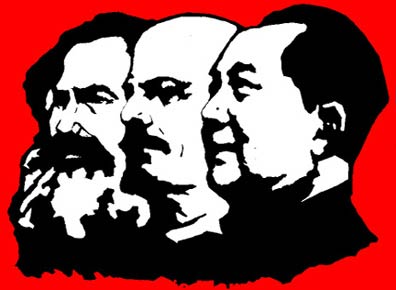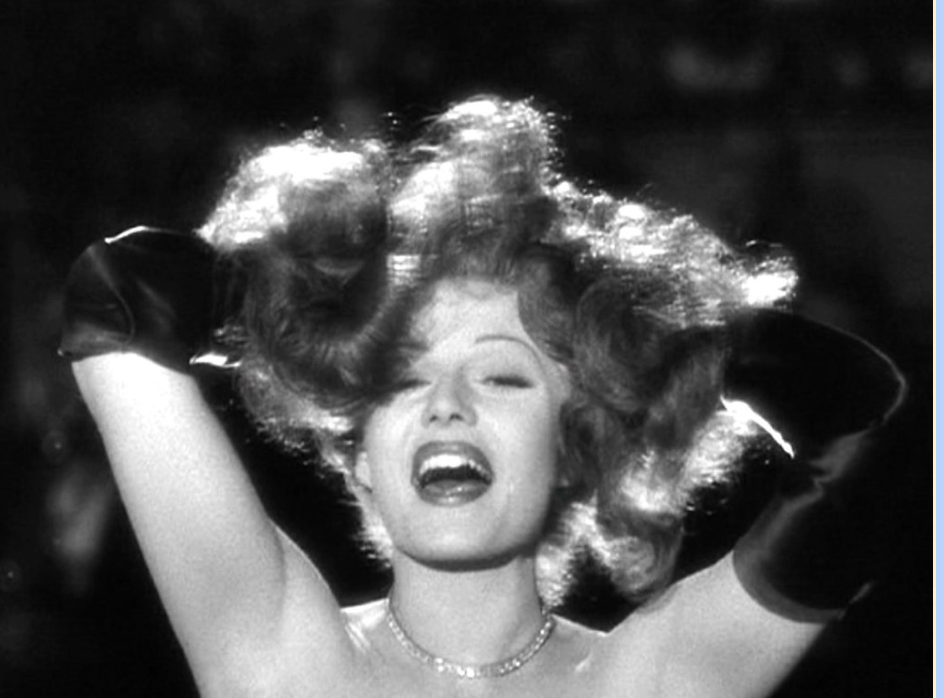Mesmerizing, alluring, mysterious—she captivates our attention immediately with her seductive gaze and red-lipped smile. But who is she? They call her the femme fatale, the “fatal woman,” the stereotypical seductress who traps her male victims with her charm, gradually guiding them to their downfall.
The character of the femme fatale first became widespread in the media in the 1940s and 1950s. Their popularity came with the wave of “noir” films, a genre that emerged from German expressionist filmmakers in Hollywood, characterized by themes of nihilism and crime. Especially given the historical context of the time, the adoption of this stock character in popular culture was not a coincidence. The femme fatale character gained mass popularity after World War II, a time when women’s roles in the public sphere were undergoing drastic changes. No longer was it a world where women remained in the house doing domestic chores. No longer was it a world where women were constantly dependent on their husbands. In fact, men returned from the war to find their wives thriving without them, working in factories to produce the very weapons they had used in battle. While this presented opportunities for women to uplift their social positions, it ignited skepticism in men. Men felt out of place and overpowered, and that scared them. This, coupled with fear of contagious diseases like syphilis and other STDs, aroused fears regarding sexuality, which led to men bringing these anxieties onto the screen.
Beginning with Hollywood noir films, the femme fatale was represented as sexually deceiving—weaponizing their sexuality to bring male protagonists to destruction. This reflected the prevalent fears of the time and appealed to men who disapproved of female economic independence in the post-war period. Afraid of women’s increasing autonomy in the public sphere, men designed these movies to discourage women’s independence by portraying them as foxy creatures who were capable of destroying innocent men. They served as warnings to the male audience, who were afraid of beautifully powerful women stealing their jobs.
The femme fatale took a role on screen as a conventionally beautiful woman, generally portrayed by actresses with light skin, an attractive physique, and bold hair colors. In the typical story, she manipulates the male protagonist, entangling him in a web of deceit to lure him into her deadly trap. Although there may seem to be a sense of sexuality and romantic interest involved, the femme fatale’s ambitions were generally selfish. She sought money. She sought power. Her eroticism is nothing more than a disguise for her true intentions, making her all the more dangerous. Building onto this immoral construction is her expression of sexual liberation, as she is typically a single woman without children. This propagates the message that female passion is superficial, which would have made male viewers at the time, who were so used to relationships defined by female submission, rather uncomfortable. In order to ease this discomfort, the majority of noir films ensured that the femme fatale was punished (usually killed or arrested), allowing the protagonist to triumph in the end.
Although the archetype became properly portrayed in the media during the 1940s and 1950s, these women have existed long throughout literary history. Recall the women of Greek mythology who have been critically condemned throughout history for their vengeful, wicked behavior. Circe turned Odysseus’ crew into swine after inviting them to a feast; the Sirens lured men to their deaths with their songs; Medusa could turn men to stone with a simple look in their eyes. As history has progressed and society evolved, the femme fatale has morphed to adapt to the changing standards, gender norms, and valued morals of the times. Since then, the femme fatale has been refurbished with added complexity to their personalities, making them intriguing not only through their sexuality but also through their three-dimensional character.
In today’s society and media, the femme fatale has gained a higher reputation among the audience. Especially to contemporary women and feminists, the femme fatale represents a progressive mindset in a traditionally male-dominated hierarchy. Some even consider her a “protofeminist,” a feminist before feminism and a transgressor of social norms whose influence has only been recently appreciated. For this reason, the media commentary channel, The Take, defines her as “both sexist and empowering:” while she was originally a creation of male fantasy, designed to restrain women and discourage them from seeking opportunities, she was able to use her resources (her beauty and charm) to her advantage when social standards went against her. To an extent, the femme fatale is almost celebrated among viewers today, reflecting an evolution in social perspectives. From traditional noir films, which balanced the femme fatale’s unconventional behavior with her death, we have transitioned to a time in which the femme fatale is becoming an acceptable model. We see her in women of modern-day movies like Jennifer Check in Jennifer’s Body (2009), Amy Dunne in Gone Girl (2014), and Jane Smith in Mr. & Mrs. Smith (2005), among others. Although the audience still considers some of their actions to be controversial, the films portray them in a manner that allows viewers to sympathize with them. Thus, the femme fatale has become perceived less as a wicked, immoral villainess and more as a powerful persona.
Even with the progress that has been made in developing the femme fatale, there still remain certain aspects of her character that need to be remodeled. In the majority of films, both historical and contemporary, the femme fatale is an idealistic creation of “the male gaze.” A term first popularized by British film theorist Laura Mulvey, “the male gaze projects its fantasy onto the female figure, which is styled accordingly.” This explains why the majority of femme fatale characters are molded to fit the conventional beauty standards: they are generally tall, white, slender, and dressed in tight-fitting clothes that accentuate their curves. Although the social definition of beauty has changed throughout the decades, the femme fatale is still manufactured to satisfy the male gaze. It is not surprising to understand why the femme holds such a tight grasp on female viewers—she is the epitome of the male gaze. However, it is this exact mindset that pushes unrealistic beauty standards onto young girls, distorting their body image and thus regressing the efforts we have made in encouraging women’s empowerment. The misogyny behind the construction of the femme fatale as a product of male pleasure undermines any possibility of female autonomy that femmes could have offered. Unfortunately, this mentality will likely not change any time soon because these standards have become so deeply ingrained into our views. They have become a part of our unconscious judgment, and it is we who must change in order to open opportunities for women to own their sexuality.
In the many forms that she takes, the femme fatale has constantly been a product of external factors over which she has no control. Since her first appearances on screen, society has made gradual improvements to her character, adding personal backstories and motivations that make each femme unique. Along with this has come an increased appreciation for her character from the side of viewers, particularly among the female audience who see her as a chance to challenge social norms and free women from the burdens of stereotypes. Although screenwriters are making attempts to humanize her character and evoke sympathy in viewers, she is still confined by popular standards, specifically the male gaze, and there seems to be a long way before her character will be truly recognized. One can only hope that future portrayals will allow her to exist with complexities that aren’t associated with men.
Works Cited
Cordier, Charles. “Femme fatale: The images that reveal male fears.” BBC, 31 January 2023, https://www.bbc.com/culture/article/20230130-femme-fatale-the-images-that-reveal-male-fears. Accessed 2 October 2024.
Dennon, Anne. “The Emergence of the Feminist Fatale in American Film Noir.” ScholarWorks@CWU, 2017, https://digitalcommons.cwu.edu/cgi/viewcontent.cgi?article=1646&context=etd. Accessed 2 October 2024.
Dent, Catherine. “The Femme Fatale in Ancient Greek Myth (7 Examples).” TheCollector, 7 April 2023, https://www.thecollector.com/femme-fatale-ancient-greek-myth/. Accessed 2 October 2024.
Facchino, Emma. “Seductive Ideals: An Analysis of the Femme Fatale’s Lasting Image and Effect on Viewers, by Emma Beatrix Facchino – Dawson English Journal.” Dawson English Journal, 2021, https://www.dawsonenglishjournal.ca/article/seductive-ideals-an-analysis-of-the-femme-fatales-lasting-image-and-effect-on-viewers-by-emma-beatrix-facchino/. Accessed 2 October 2024.
Hawks, Howard, et al. “Here Comes Trouble! : An Analysis of the ‘Femme Fatale’ Trope.” Celluloid: The Film Society of Miranda House, 6 April 2023, https://celluloidblogsite.wordpress.com/2023/04/06/here-comes-trouble-an-analysis-of-the-femme-fatale-trope/. Accessed 2 October 2024.
Jackson, Lauren Michele. “The Invention of ‘the Male Gaze.’” The New Yorker, 14 July 2023, https://www.newyorker.com/books/second-read/the-invention-of-the-male-gaze. Accessed 2 October 2024.
Mulvey, Laura. Laura Mulvey ‘Visual Pleasure and Narrative Cinema’ 1975. Edited by Mark Lewis, Afterall Books, 2016. Accessed 2 October 2024.

















![Teacher [Milk] Tea: Part 2](https://bisvquill.com/wp-content/uploads/2024/03/Screen-Shot-2024-03-19-at-9.28.48-PM.png)





































